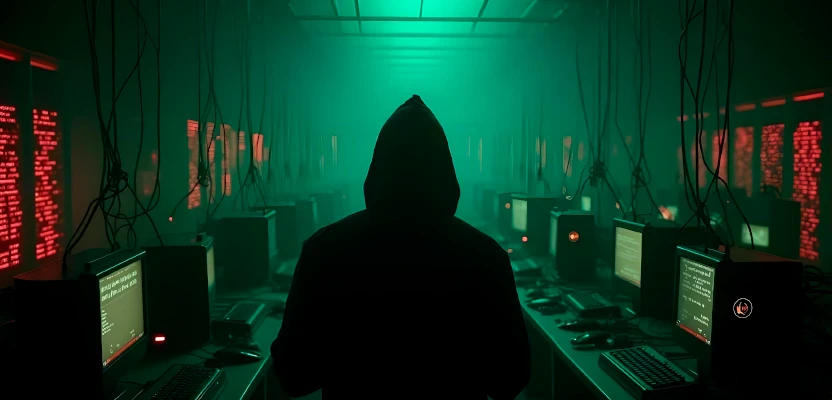
In a bold and elaborate operation spanning six years, North Korean IT workers have been exposed as the masterminds behind a global fraud and cybersecurity threat. According to a recent indictment by the U.S. Department of Justice (DoJ), 14 North Korean nationals conspired to exploit remote work opportunities in U.S. companies under false identities, generating at least $88 million for the Democratic People’s Republic of Korea (DPRK). This scheme not only demonstrates the regime’s cunning ability to bypass sanctions but also reveals the growing sophistication of its cyber operations.
Inside the Fraud: How the Operation Worked
North Korea’s IT worker scheme was as audacious as it was complex. At its core, the operation relied on disguising IT professionals—employed by DPRK-controlled companies Yanbian Silverstar (China) and Volasys Silverstar (Russia)—as legitimate remote workers. These individuals created fake identities, often borrowing or stealing details from U.S. citizens, to secure jobs at Western companies.
Key methods used by these operatives included:
- Fake Credentials and Phony Websites
The conspirators set up counterfeit company websites, complete with fabricated profiles and disjointed phrases, to build credibility. These websites listed U.S. addresses and contact information that gave the appearance of being legitimate IT firms. - Laptop Farms and Remote Access
In the U.S., accomplices—referred to as "laptop farms"—helped create a façade of domestic operation. These collaborators set up company-issued laptops that DPRK workers accessed remotely from China and Russia. This tactic ensured their North Korean origins remained hidden while maintaining control over their work environments. - Infiltration and Data Theft
Beyond securing salaries from unsuspecting employers, the operatives engaged in intellectual property theft. They siphoned proprietary source codes and sensitive information, often threatening to leak these unless companies paid ransoms.
Economic Impact and Cybersecurity Risks
The scale of this fraud is alarming. The scheme amassed at least $88 million for North Korea’s regime, funds critical to a country heavily sanctioned by the international community. But the financial losses extend far beyond stolen salaries.
One U.S. company sustained hundreds of thousands of dollars in damages after refusing to meet an extortion demand. This growing trend of leveraging insider access for ransom underscores the heightened risks posed by North Korean operatives.
Moreover, the DPRK regime has been increasingly linked to broader cyberattacks. A prime example is the 2024 heist targeting Radiant Capital, a decentralized finance (DeFi) platform. This attack, orchestrated by a Lazarus Group sub-cluster known as Citrine Sleet, resulted in the theft of $50 million in cryptocurrency. The Radiant breach involved social engineering tactics similar to the IT worker scheme, highlighting the intersection of technical expertise and psychological manipulation in North Korea’s cyber strategy.
A Broader Network of Exploitation
The IT worker fraud scheme is only one piece of North Korea’s multifaceted approach to generating illicit revenue. Beyond fraud, the regime has expanded into the realms of cryptocurrency theft, banking system breaches, and ransomware campaigns.
- Cryptocurrency Theft
North Korean hackers have reportedly stolen over $1.7 billion in cryptocurrency between 2017 and 2023. These funds often bypass traditional financial systems, making them an ideal resource for a sanctions-strapped nation. - Operation Dream Job
Another infamous operation linked to North Korean cyber units involves enticing developers and IT professionals with fake job offers. Dubbed "Operation Dream Job," this social engineering campaign has compromised numerous systems under the guise of legitimate employment opportunities. - Global Espionage
From targeting government agencies to private enterprises, North Korea’s cyber activities are not just financially motivated. Espionage efforts tied to their weapons development programs also play a significant role.
Government Action and Ongoing Investigations
In response to the indictment, the U.S. government has intensified its efforts to disrupt North Korean cyber schemes. The DoJ has seized 29 fraudulent website domains and over $2.26 million in proceeds tied to the operation. The State Department has also offered a $5 million reward for information on the conspirators and their activities.
The FBI has issued repeated warnings to companies worldwide, emphasizing the need for stringent employee verification and monitoring of remote access tools. Employers are urged to scrutinize unusual payment methods and resist attempts to redirect company equipment to unfamiliar addresses.
Assistant Attorney General Matthew G. Olsen, in charge of the National Security Division, stated:
"This indictment and associated disruptions highlight the cybersecurity dangers associated with this threat, including theft of sensitive business information for the purposes of extortion."
Lessons for Organizations Worldwide
The exposure of North Korea’s IT worker fraud serves as a wake-up call for companies around the globe. As the demand for remote work increases, so does the risk of exploitation by sophisticated threat actors. Businesses must adapt by implementing robust vetting processes and enhancing cybersecurity measures.
- Comprehensive Background Checks
Employers should cross-reference identities with official databases and conduct video interviews to confirm an applicant’s physical presence. - Monitoring Remote Activities
Tools that track device usage, access locations, and software interactions can help detect anomalies. - Awareness Training
Educating employees about the tactics used by cybercriminals, such as phishing and social engineering, is crucial to reducing vulnerabilities.
A Global Responsibility
Tackling North Korea’s cybercrime operations requires international collaboration. Governments must share intelligence, coordinate sanctions enforcement, and strengthen cybersecurity frameworks.
For individual businesses, the lessons are clear: vigilance and preparedness are the best defenses. By staying informed about evolving threats and implementing best practices, companies can protect themselves from falling victim to these elaborate schemes.
Conclusion
North Korea’s IT worker fraud scheme is a stark reminder of the challenges posed by state-sponsored cybercrime. While the indictment of 14 individuals marks a significant step forward, the broader network of DPRK operatives continues to adapt and evolve. Only through collective effort—spanning governments, private sectors, and cybersecurity experts—can we hope to counter these threats effectively.
The message to businesses is simple yet urgent: the digital frontier is both an opportunity and a battleground. Staying one step ahead is no longer optional—it is imperative.




Comments 0